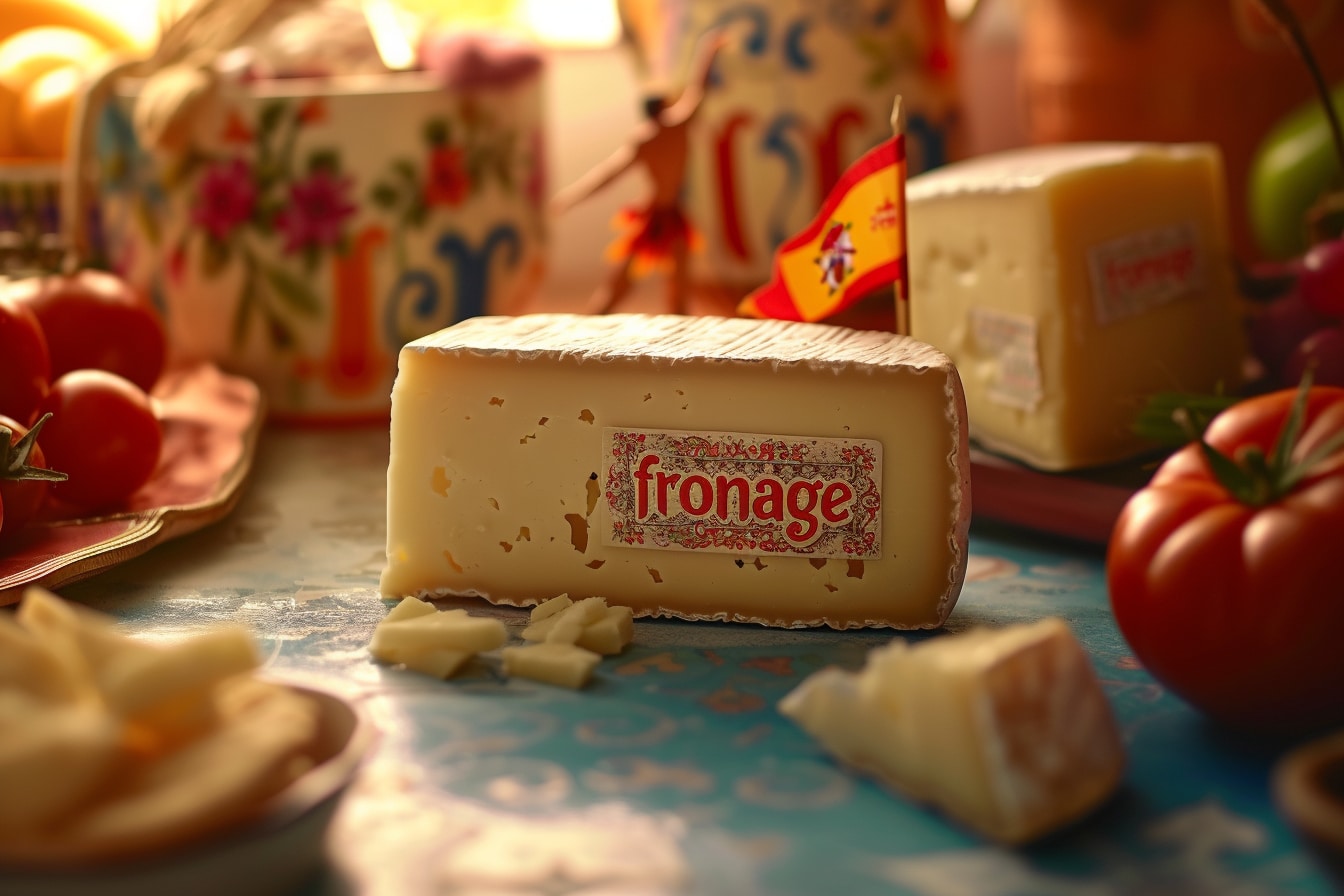Unlocking the Spanish Lexicon: Discover the Native Translation of ‘Cheese’

Cheese, an ancestral and essential food of many cultures, is a true symbol of French gastronomy. Its fame crosses borders, and its name in other languages is often a subject of curiosity for French speakers. Let’s take a look at how the term “cheese” translates into Spanish and explore the intricacies that make it possible to speak about this culinary delight like a true Spanish speaker.
Direct translation and its variants
Queso: the universal term
Queso is the Spanish word for cheese. This is the direct and most used translation, regardless of which Spanish-speaking country you are in. However, diving into the art of Spanish cheesemaking, it appears that the word “queso” can take on different nuances and names depending on the type of cheese or region.
Regional variants and protected names
Spain, rich in cheese traditions, recognizes a wide variety of cheeses with protected designation of origin. Manchego, Cabrales, Or Idiazábal are examples where the regional name takes precedence over the generic term queso.
The art of speaking cheese in Spanish
Mastering the conversation around cheese in Spanish requires knowing certain key terms and typical expressions to evoke the world of cheese in all its complexity.
Categorize queso
To express yourself like a native speaker, it is essential to know how to categorize cheese. Spanish speakers often use specific adjectives like queso curado (ripened cheese), queso fresco (fresh cheese), or semi-cured cheese (semi-ripened cheese). These terms indicate the degree of maturation of the cheese and strongly influence its taste and texture.
Types of milk
Leche de vaca, leche de oveja, leche de cabra… So many terms which specify the type of milk used in the making of cheese. A wise Spanish speaker will not only recognize them but also appreciate them for their unique characteristics. For example, dichotomy between queso de cabra, often fresher and softer in taste, and egg queso, generally stronger and full-bodied.
Famous cheeses
Certain Hispanic cheeses have acquired a notoriety that goes beyond their region of origin. THE Queso Manchego, made from sheep’s milk from the La Mancha region, is known internationally. Explaining its firm texture and pronounced taste is sharing a part of Spanish cheese culture.
Tasting and associated vocabulary
Cheese tasting is a social ritual that has its own vocabulary in Spanish. We will talk about sabor (taste), aroma (aroma), texture (texture), or even maturation (refining). Knowing how to describe a cheese with these terms opens the door to passionate discussions with queso lovers.
Accompaniments
Speaking about cheese in Spanish also involves knowing the best accompaniments. Bang (bread), wine (wine), dried fruits (dried fruits) and mermelada (jam) often complete the tasting and enhance the flavors.
Queso Recipes
Beyond tasting, Spanish cheese is available in a range of traditional recipes. Whether it is tortillas, of the tapas or some pintxos, Hispanic gastronomic culture knows how to highlight queso in all its forms.
Tips for Cheese Lovers
For those who would like to explore more of the Spanish cheese tradition, here are some practical tips.
Visit local cheese factories
A visit to a quenador (refiner) or in a query local (cheese shop) is an almost obligatory process. These are places where the passion for cheese is palpable and where ancestral know-how is passed on.
Participate in guided tastings
Many events and cheese fairs offer tastings Guided (tastings). This is the perfect opportunity to refine your knowledge of quesos, guided by experts in the field.
Learn common expressions
Expressions like “to chuparse the backs” (finger-licking) or “is a queso de primera” (it’s a premium cheese) enrich the dialogue and show sincere appreciation of the product.
Culture and cheese in Spain
Discussing cheese in Spain also evokes an important facet of Spanish culture and national identity.
Parties and celebrations
Festivals such as Feria del Queso demonstrate the importance of cheese in Spanish celebrations and heritage. This is an opportunity to see how queso is integrated into the traditions and daily life of the Spanish.
Geographical indications
Geographical indications, such as protected designations of origin (PDO), are guarantors of the quality and authenticity of Spanish cheeses. Becoming familiar with these labels allows us to promote and preserve the country’s cheese diversity.
Cheese in literature and art
Cheese is also present in Spanish literature and art, often as a symbol of rural life and connection to the land. Recognizing these cultural references enriches the understanding and appreciation of queso.
For further
The world of cheese in Spain is impressively rich and exploring its multiple facets requires more than a simple translation of words. It is an invitation to discover a heritage, to engage the senses and to discuss memorable taste experiences.
Comments
Leave a comment